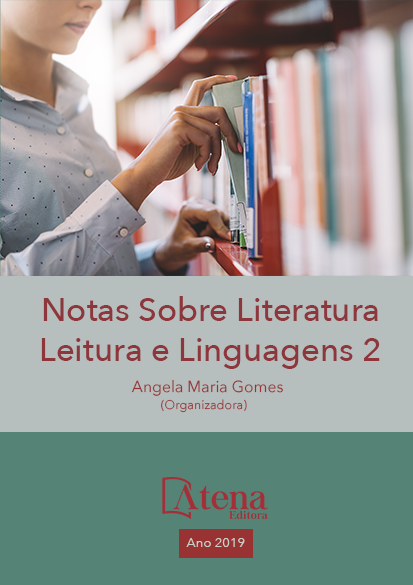
ENSINO DE LÍNGUA ESTRANGEIRA PARA SURDOS: UM RELATO DE EXPERIÊNCIA
No Brasil, o surdo tem como primeira
língua a Língua Brasileira de Sinais (Libras), de
modalidade visual-espacial e, como segunda
língua, o Português, de modalidade áudiooral.
Nesse sentido, é possível afirmar que a
aprendizagem da Língua Inglesa se torna mais
fácil devido ao conhecimento prévio de outra
língua com modalidade paralela (áudio-oral),
pois acaba sofrendo influência em questões
estruturais e gramaticais, segundo Moraes e
Cavalcanti (2015). Este relato tem como objetivo
analisar e compreender o funcionamento do
ensino da língua inglesa para surdos a partir
das experiências de observações feitas em
uma escola estadual na cidade do Recife para
a disciplina de Estágio Curricular no Ensino de
Inglês. Para tal, buscaremos nos fundamentar
em Moraes e Cavalcanti (2015), Souza (2014;
2015), dentre outros. A metodologia empregada
foi a qualitativa, para uma melhor descrição
dos eventos de sala de aula. As observações
foram feitas entre fevereiro e abril de 2017,
de modo a dar aos professores em formação
a experiência necessária para os estágios
posteriores no decorrer do curso e para a futura
prática docente, além de estimular uma reflexão
sobre dificuldades que tangem o ensino de
uma língua estrangeira para surdos. A análise e
discussão dos dados obedeceu às orientações
de Trivinõs (2010), o que nos apontou como
resultado uma defasagem entre o processo de
aprendizagem de surdos e de ouvintes, que
estudam sob os mesmos métodos de ensino,
apesar de possuírem necessidades diferentes
e buscarem objetivos diferentes quanto ao
conhecimento da língua inglesa.
ENSINO DE LÍNGUA ESTRANGEIRA PARA SURDOS: UM RELATO DE EXPERIÊNCIA
-
DOI: 10.22533/at.ed.7041925016
-
Palavras-chave: ensino-aprendizagem, língua inglesa, surdos.
-
Keywords: teaching-learning, English language, deaf.
-
Abstract:
In Brazil, the deaf have as their first
language the Brazilian Sign Language (Libras),
of visual-spatial modality and, as a second
language, Portuguese, of audio-oral modality.
According to Moraes and Cavalcanti (2015),
it is possible to affirm that English language
learning is easier due to the previous knowledge
of another language with a parallel modality
(audio-oral), as it ends up suffering influence
in structural and grammatical questions. This report aims to analyze and understand
the functioning of English language teaching for the deaf from the experiences of
observations made at a state school in the city of Recife for the discipline of Curricular
Internship in the Teaching of English. For this, we will seek to base ourselves in
Moraes and Cavalcanti (2015), Souza (2014, 2015), among others. The methodology
used was the qualitative one, for a better description of the classroom events. The
observations were made between February and April 2017, in order to give the trainees
the necessary experience for the later stages during the course and for the future
teaching practice, besides stimulating a reflection on difficulties that affect the teaching
of a foreign language for the deaf. The analysis and discussion of the data obeyed the
guidelines of Trivinõs (2010), which resulted in a lag between the learning process of
the deaf and hearing, who study under the same teaching methods, despite having
different needs and seeking knowledge of the English language.
-
Número de páginas: 15
- Iris Cynthia de Souza Ferreira


